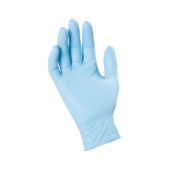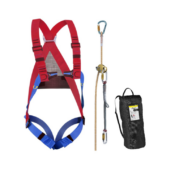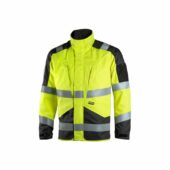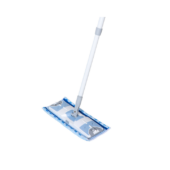Introduction
Construction sites are inherently dangerous environments, requiring strict safety measures to protect workers from potential hazards. With the rise in construction-related accidents, it’s crucial for site managers and workers to implement proactive safety protocols. Proper training, awareness, and adherence to safety standards can significantly reduce the risk of injuries. This article outlines ten essential construction safety tips to ensure a safer workplace for everyone involved.
1. Know Safety Rules
It’s important to know which construction safety rules apply to your team since they safeguard construction workers.
Know OSHA Standards
As the agency that sets and enforces construction safety tips regulations, OSHA is vital. A construction manager must familiarise themselves and their team with OSHA’s safety standards for their projects. Fall prevention and construction machinery safety are priorities.
OSHA mandates guardrails, safety nets or personal fall arrest equipment for operations exceeding six feet above ground. OSHA requires all construction machinery to be periodically inspected and operated by trained workers. This involves making sure equipment operators are certified and know each machine’s safety standards.
Integrating these OSHA guidelines into your everyday operations can improve construction site safety and efficiency.
Safety Policies by Company
Construction organisations frequently have organisational safety plans including processes and rules in addition to OSHA standards.
2. Wear Safety Gear
Construction accidents can be avoided with proper safety gear.
Personal Protection Equipment
All construction workers should wear PPE. Examples of construction PPE include:
- Hard hats
- Earplugs
- Goggles or safety glasses
- Gloves
- Heavy shoes
Regular Safety Gear Inspection and Maintenance
Unfortunately, PPE wears out. Workers should periodically check their gear for wear and tear. Replace old or damaged gear immediately to improve job site safety. Plastic hard helmets disintegrate over time due to sun exposure.
Regular safety meetings and training sessions should be conducted.
3. Value of Ongoing Training
Regular safety meetings are necessary because construction safety tips requirements and best practices change. Ongoing training keeps construction workers up to speed on safety standards and emphasises site safety.
Task-Specific Training
Specialised personnel or those managing dangerous machinery may need further training to avoid accidents. An on-site safety plan should include a task planning meeting to assess safety problems and plan processes.
4. Be aware of surroundings
Complacency and lack of awareness cause many construction mishaps. Workers can avoid harm by being vigilant.
Identification of Risks
Construction workers should always be aware of slip-and-fall dangers, equipment failures, and tool mishaps. Report hazards to a supervisor and handle them immediately.
Maintaining Concentration
Construction workers must be vigilant and aware every day. Avoid distractions like mobile phone usage that might impair focus and put workers at danger. Get used to gazing up, down, and around, especially if work is going on above you.
5. Tool and Machine Use Safely in Construction Safety Tips
Workers must be instructed on how to handle and operate all building site equipment to avoid accidents. Safety includes both tools and invisible airborne impacts of tool activities.
Safe Handling and Use
Only trained personnel should use particular tools and equipment. All forklift and crane operators should have had rigorous safety training.
Checkups and Maintenance
Check tools and equipment for premature wear and tear. Lock damaged or hazardous equipment to prevent inadvertent usage until the problem is fixed. All construction sites should have a dependable mechanism for reporting tool, gear, and safety problems.
6. Keep Workplace Clean and Organised
Maintaining a clean and organised construction site reduces accidents and keeps the project on track. Effective cleaning is crucial because clutter increases the risk of accidents. Disorganised sites promote trips and falls.
Clutter Management and Workplace Order
Construction sites must be tidy. This entails immediately removing unused materials and tools and storing them in off-site work vehicles or construction trailers. Preventing injuries and respiratory concerns requires a thorough construction dust control plan for sawdust and debris, sometimes neglected risks.
Regular cleaning and waste disposal
Safety requires proper waste disposal, especially of combustible items like hydrofluoric acid and other chemicals. Supervisors must set cleaning schedules to maintain the workplace safe and organised. The schedules should clearly state who is accountable for which cleaning activities each day, reducing misunderstanding and making the workplace safer.
7. Lift Properly
To avoid back injuries and other illnesses, construction workers should be educated in correct lifting procedures when transporting supplies and materials.
To avoid back injuries
Construction workers should lift with hips and knees to avoid back strain and injury. Workers must avoid carrying heavy goods over shoulder level. Avoid twisting or turning while carrying large objects to avoid back pain.
When an object is too heavy for one worker to lift, understanding when to ask for help can prevent damage.
Aiding Mechanically
Pallet trucks, forklifts, and scissor lift tables can assist handle big products without back damage. Construction workers should learn how to utilise mechanical lifting assistance safely.
8. Protect against falls
Although falls are a regular construction site hazard, most may be prevented with basic safety precautions.
Knowing Fall Risks
All construction workers must know how to spot fall dangers. Workers should be aware of construction risks including ladders, scaffolding, rooftops, and other elevated locations and how to be safe.
Wearing good footwear and cleaning work spaces reduces fall dangers. Worker training should also include reporting persistent fall dangers to direct supervisors.
Use of Fall Protection
Construction site fall accidents can be greatly reduced using fall prevention equipment. Workers in fall-hazard zones must have fall protection gear. Common fall prevention gear:
Fall arrest systems include full-body harnesses, shock-absorbing lanyards, and retractable lifelines. Fall arrest devices protect workers from falling.
Fall Restraint Systems: These protect workers from falling off edges. Workers usually wear a fixed-length lanyard tied to their harness and a secure anchor point.
Guardrails, safety netting, and toe-boards surrounding high platforms prevent falls.
To operate safely at heights, people should be trained on how to handle this equipment and comprehend their authorised uses.
9. Report Dangers Immediately
Some accidents occur because workers are uncomfortable reporting harmful situations to management or supervisors. Construction organisations must foster a safety reporting culture and assure workers that safety is a primary concern on every job.
Promoting Safety Reporting Culture
Workers should report safety issues at any moment during construction. Each worker should know who to report dangers and concerns to. Investigation, seriousness, and prompt resolution of any safety issues are essential.
Construction sites sometimes include “concern boxes” where workers can anonymously report safety issues. This might inspire employees to report issues.
Supervisors’ Safety Duties
Supervisors are often the first to learn about construction site safety issues, so they must know how to handle them. Supervisors may be able to fix problems. However, escalating the matter to higher management may be essential to address it.
10. Hydrate and pause
Finally, construction workers should keep hydrated and take breaks to be healthy.
Avoiding Heat Stress and Dehydration
Hot weather may be dangerous and demanding for construction workers. Staying hydrated and wearing light clothing and sunscreen can help these workers avoid heat stress and heat stroke.
Detecting Fatigue
Workers should also learn to spot weariness, heat exhaustion, and heat stroke at work. Heat stroke symptoms include:
- Headaches/dizziness
- An unexpected absence of sweat
- Shallow breathing
- Hot, red skin
Workers with heat stroke or exhaustion should be taken off the working site to recover in an air-conditioned work vehicle or trailer. Sometimes medical treatment is needed. Every worker should watch out for herself and others.
Conclusion
Prioritizing safety on construction sites is not just a legal obligation but a moral one. By following these ten crucial safety tips, construction managers can create a safer environment that reduces the likelihood of accidents and ensures the well-being of their teams. Consistent training, awareness, and the proper use of equipment are key to maintaining a secure and efficient job site. Ultimately, a strong commitment to safety benefits both workers and the overall success of any construction project.

















